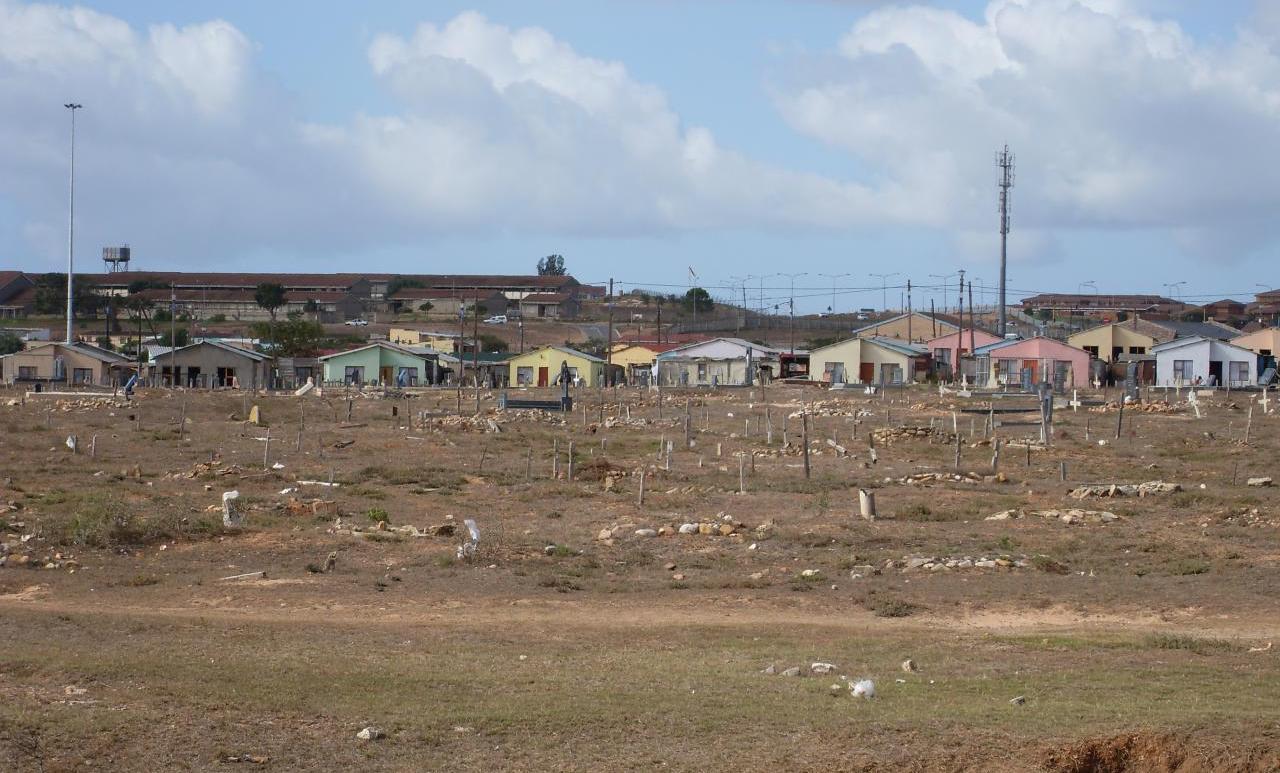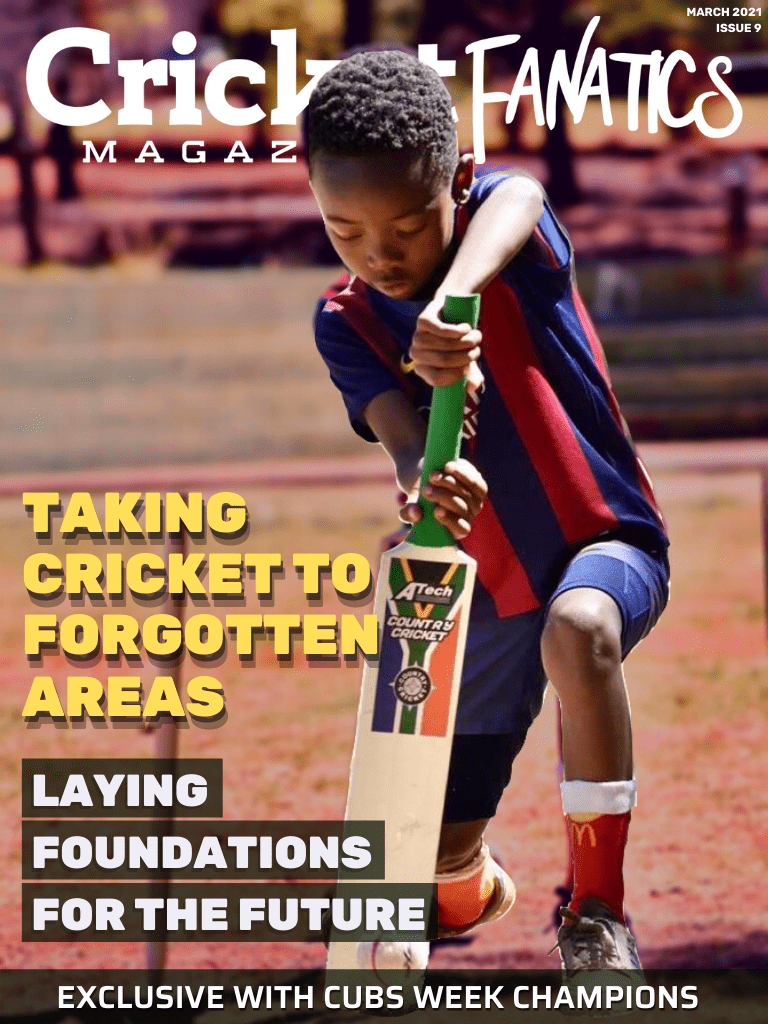
Table of Contents
EDITOR'S NOTE
Taking Cricket To Forgotten Areas
Khalid Mohidin
Founder and Editor - Cricket Fanatics Magazine
In a month that was ladened with action on the field, we decided to turn our attention to an important sector in South African cricket that usually doesn't get much exposure.
Despite the minimal exposure, it is such an integral part of the future of South African cricket. After all, our youth are the key to our future.
We all need to invest time, money and effort to improve youth cricket in the country and give more opportunities and exposure to those who are playing an active role in the development of our future generations.
From the moment a young kid falls in love with the game, to the point where they represent their country for the first time.
But there's a problem. Players from our rural areas don't get the same attention, coaching, investment and opportunities as those who live in the suburbs and locations.
We, as a publication, want to play an influential role in the promotion of those who are dedicating their lives to improving the pipeline of South African Cricket.
In this issue, we shine the light on youth cricket.
We analyse where the game can improve in South Africa, what we can learn, and what needs to be done to help accelerate the development of youth in the country.
It's imperative that our pipeline gets a tunnelled focus.
So sit back, grab a beverage and a snack, and enjoy the first ever Youth Special Edition of Cricket Fanatics Magazine.
Thank you to Lesego Pooe for sponsoring us with the cover photo of one of the kids (Mpho Dithagiso) she coaches in her street cricket program.
Sponsor a future edition by becoming a patron
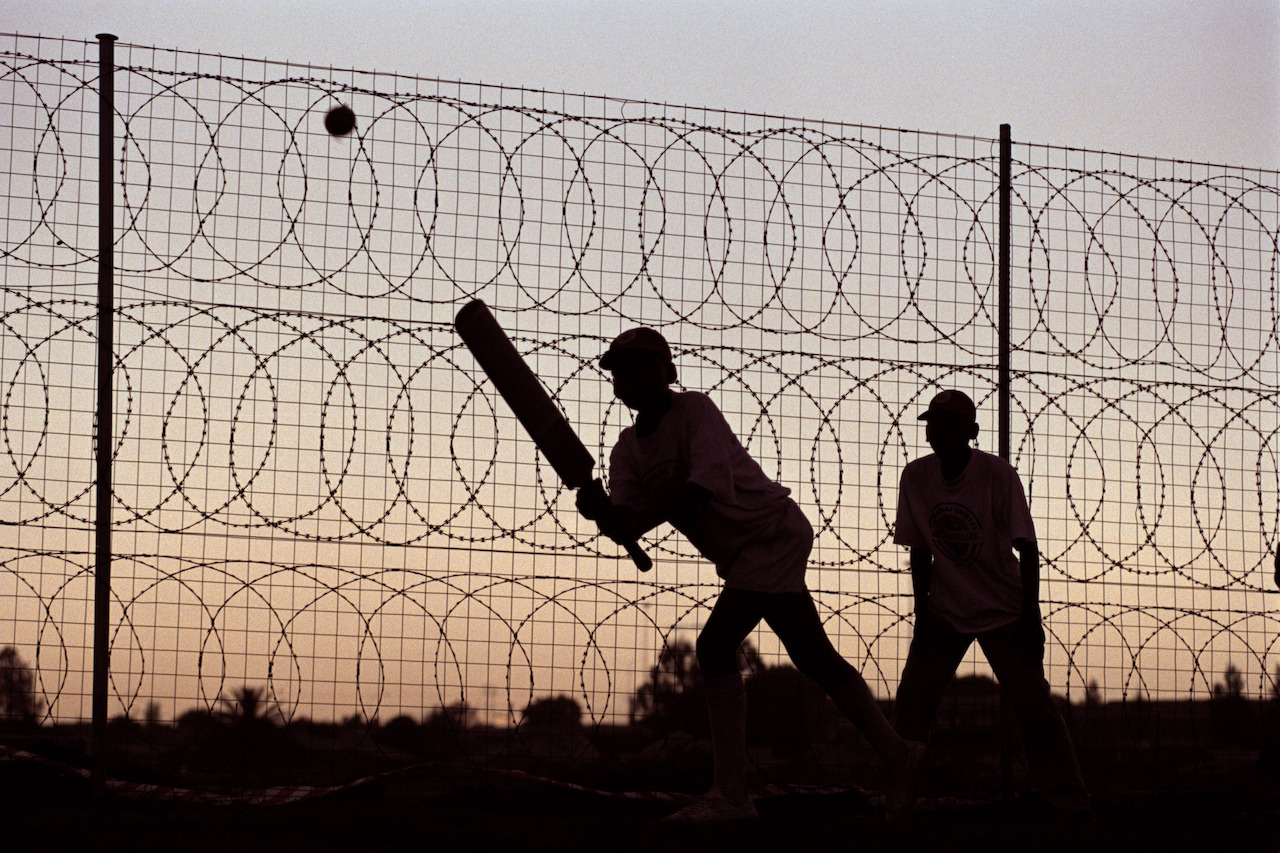
Taking cricket to forgotten areas
By Lubabalo Skhosana
For far too long we have spoken of transformation giving everyone equal opportunities and rightfully so, but very few times do we touch on this matter as deeply as we should.
It is known that transformation is at the centre of South African cricket right now and there are many contrasting views about transformation as a whole and how it is carried out. Not to say transformation is not important but let us forget transformation for a second and look at growing the sport in general.
Imagine how big a talent pool the country would have if the sport were spread evenly across the country?
Having a bigger talent pool to choose from means more options for selectors to choose from across levels of the game. It is not a lie that cricket is still a sport that seems to be easily accessible to certain parts of the country and not accessible to many parts of the country.
It is important that people from all walks of life can have access to cricket and that is currently something that is not happening. Efforts have been made over the last couple of years to take cricket to a variety of locations and we have seen that through RPC’s and Hubs but what about the rural areas?
For as long as I can remember, rural areas have always been forgotten. This is something I know from experience having grown up in the rural areas of Mpumalanga and having played most of my cricket in the rural areas of Mount Ayliff.
We had no proper cricket facilities; no proper coaching and opportunities were always so far and few between. Even if opportunities were there, it probably would have been a mission close to impossible to make it with the level of coaching we had compared to some of the teams we often had to compete with. Teams from the more well-off areas.
There remains a big gap between our areas, there is a big gap between suburbs and locations and there is also an even bigger gap between suburbs, locations and rural areas.
The standard of facilities and the coaching forms part of that gap in that a youngster from the suburbs is likely to have far better resources and better coaching than youngsters from the location and rural areas. This automatically places this youngster at an advantage.
We can present playing opportunities to all players from across these areas but there will always be a gap that is visible even in their playing ability and level skill. It is even worse for young aspiring cricketers from rural areas because most rural areas do not even have access to cricket, and this is where the growth of cricket and the progress of transformation will be aided.
We can even go as far as looking at the U19 sides we have had over the years to see if there ever was a player was who made it straight from a rural area into the side or even count the number of players who made it straight from the location into the side vs players from the suburbs.
This brings us to another visible gap, the gap between our schools is also just as big. A 12-Year-old batsman from a school in Zwide in Port Elizabeth is highly unlikely to have the same cricket age or be at the same level as a 12-year-old from Grey or Saints.
While some may say private coaching could be a factor, we must acknowledge that the gap is too big for us to even pin it down to mere private coaching.
It may take a couple of years to narrow the gaps but efforts to narrow the gaps need to be made. It is okay for the difference between two players of the same age to be an extra hour or two of private coaching, but it becomes a problem when the difference is bigger than that because of the level of coaching, resources etc.
Efforts to bridge the gap between our so-called cricket schools and our “normal “schools need to be made.
Cricket needs to be taken to the less privileged areas. Resources and players from these areas and schools need to be exposed to quality coaching even if it means that coaches are sent to these schools to coach.
To keep our cricket alive, try and reach a certain standard and to aid the progress of transformation we need to take cricket to the people.
A boy from the rural areas of Mpumalanga, KwaNdebele should not have to move to Pretoria or Nelspruit for them to get quality coaching, exposure and opportunities. A boy from Zwide Hub should not have to rely on a scholarship to get better opportunities.
Picture by: Chris Turvey/EMPICS Sport
Get More Clients With Cricket Fanatics Magazine
Cricket Fanatics Magazine has the visibility, infrastructure, expertise and toolset to automate your marketing and branding.
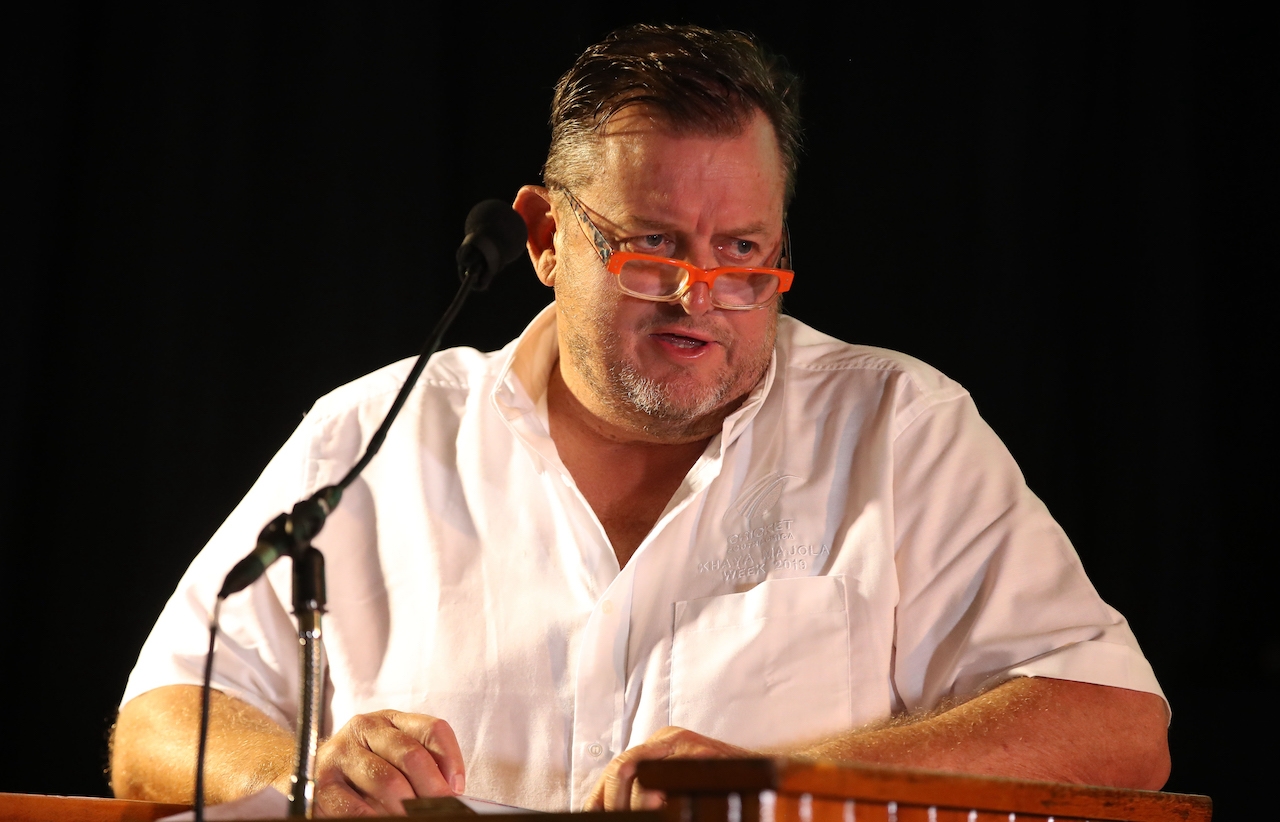
Laying the foundations for the future
By Chris Chiwanza
"To develop the present, you empower the adults. To develop the future, you empower young people."
I watched this young boy, he was around nine or ten years old. His first delivery was a medium pacer. The batter swiped at it, but made no contact. His second delivery was different, he bowled spin.
The batter attempted what I imagine to be a reverse sweep. He edged it, only for the gloveless wicketkeeper to fumble it and fail to hold on to the ball.
For a while, I paused my leisurely stroll to watch this game of park cricket. I normally do not stop for long, the youths from my neighbourhood contest against each other regularly.
But today my attention was fixed on this young boy. Most of the players are older, most out of school, and even though none harbours any serious dreams of playing professionally, they do fancy themselves to be incarnations of Tendulkar, De Villiers, Ganguly, Ponting and countless others. I don't care too much for them.
I am more interested in this young boy who is bamboozling youngmen older than him by some distance. He bowls (spin, pace... everything), bats and keeps wicket. When he bats, no one can get him out.
This kid could have a future. There was a time when that future didn't amount to much. A future that would consist of more street/park cricket, then maybe a social league.
At best, he would play on the fringes of franchise cricket in the unofficial leagues run by people of colour. Fortunately, that is a thing of the past.
This young boy, whose name I do not even know, could become a household name. It's not wishful thinking or mere wax lyrical by a dreamer. Think of it this way.
Cricket South Africa runs one of the biggest development programs of its kind in form of KFC Mini Cricket.
According to Niels Momberg, the CSA Youth and Tertiary Cricket Manager, KFC Mini Cricket introduces the game to the larger South African community in a fun and easy way.
The program, which has over 126 000 participating children aged between three and thirteen, 13 600 coaches and is in 6 600 schools helps minors to get acquainted with the basics of the game, including batting, bowling and fielding.
Thereafter, there are aspirational programs like the popular Khaya Majola Week.
"The Khaya Majola week as well as the other Youth weeks are aspirational events. It's therefore very important for all young players to work towards these tournaments. It's also very important as a means of talent identification.
"The regional HUBS and Regional Performance centre’s (RPC) play a very important role in areas where the lack of facilities remains a major challenge," Niels Momberg explains.
"CSA has 31 Focus schools that supported with coaching, infrastructure upgrades, bursaries. These schools have a majority black demographic and the ultimate goals is for these schools are to become fully-fledged Cricket Schools to play and compete at Highest School levels and produce players for the CSA Pipeline."
However, it is not every child that takes part in the KFC Mini Cricket program that manages to get the opportunity to work towards youth events like the Khaya Majola Week.
This is why Momberg and his team are working towards launching a new format of modified cricket that will cater to players that transition from the KFC Mini Cricket phase.
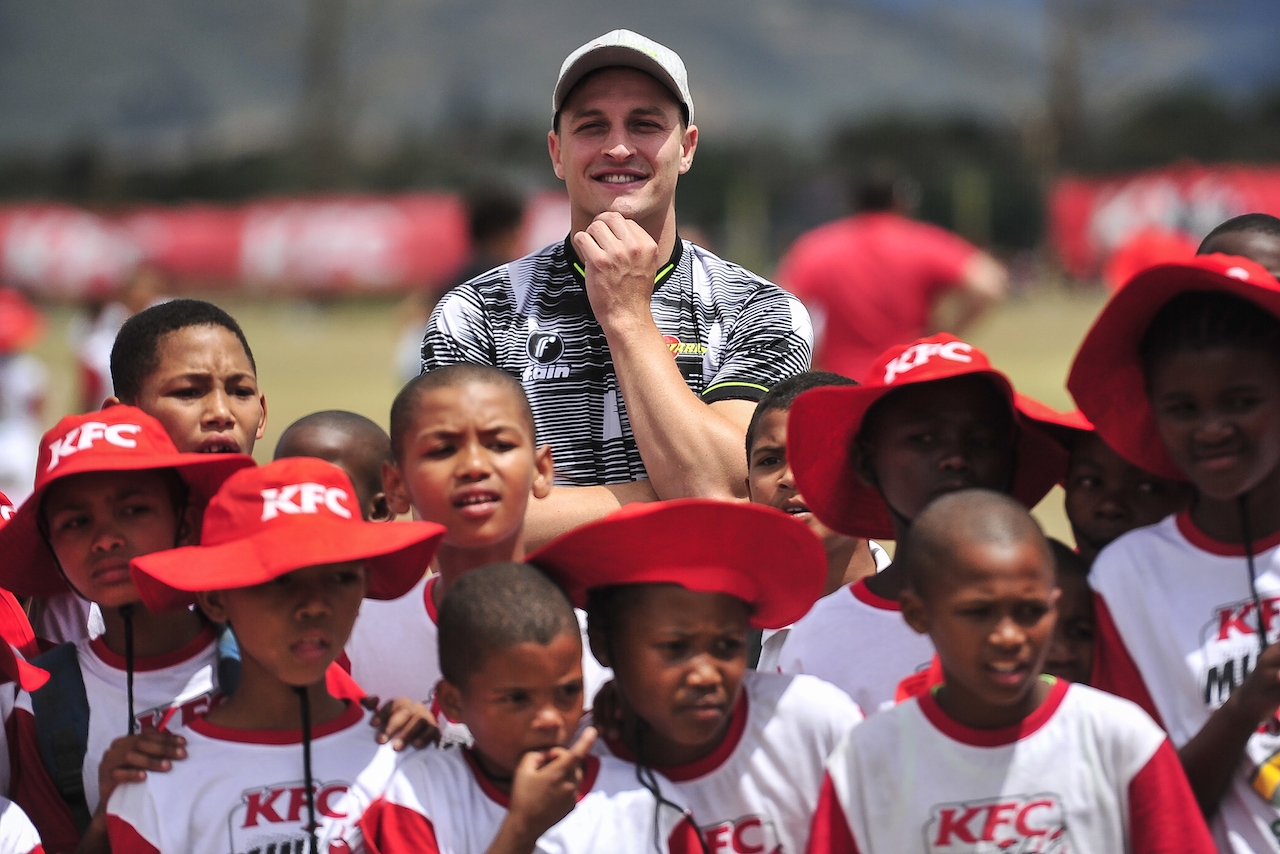
This program will go a long way in helping young players develop the necessary skills for them to hone their skills and get the best chance at further development.
The major driver of this new project was the high drop-off in player numbers as they grow older. In addition to that, Momberg hopes to also get more schools playing and feeding into the national programs.
More often than not, when we speak of cricket, be it KFC Mini Cricket, age-group cricket, semi-pro or professional cricket, the first thing people think about is the boys and men's game.
It is possible that this could be the reason why the girls and women's game has lagged in development. But, in the past few years, Cricket South Africa has made sure that both boys and girls enjoy the same developmental facilities.
"Probably the biggest outcomes are the changing of the Landscape for Girls Cricket. Girls National and Regional Tournaments will mirror those of the Boys. They will have Talent acceleration Programs (TAP) that will be the same as the Boys Tap programs," says Momberg.
This is a huge development. And it's no surprise that these developments are happening under Niels Momberg's watch. The man has a deep passion for the development of South African youth cricket.
When I asked him about what drives him to do the best he can each day, in his work developing youth cricket he said simply: "My motivation is that through cricket we can changes lives and create opportunities."
And even though there are notable advances that have been made in the game, even though young kids like the boy I saw bamboozling young adults in my local park now have a better shot at a future in the sport, there is still more work to be done. And the work is right at the root, where everything begins.
"Grassroots needs to grow through better and more facilities. Players at grass root level need real and growing opportunities to firstly play and then move on to higher levels where talent and hard work are rewarded," Momberg declares.
And if past developments are anything to go by, you can bet on the fact that it will happen. It might be a slow progress, but it will come to pass.
Advertisement
Ezra Poole's Online Wicketkeeping Academy
Learn how to Master The Craft of Wicketkeeping Without Having to Hire a Full-Time Personal Coach.
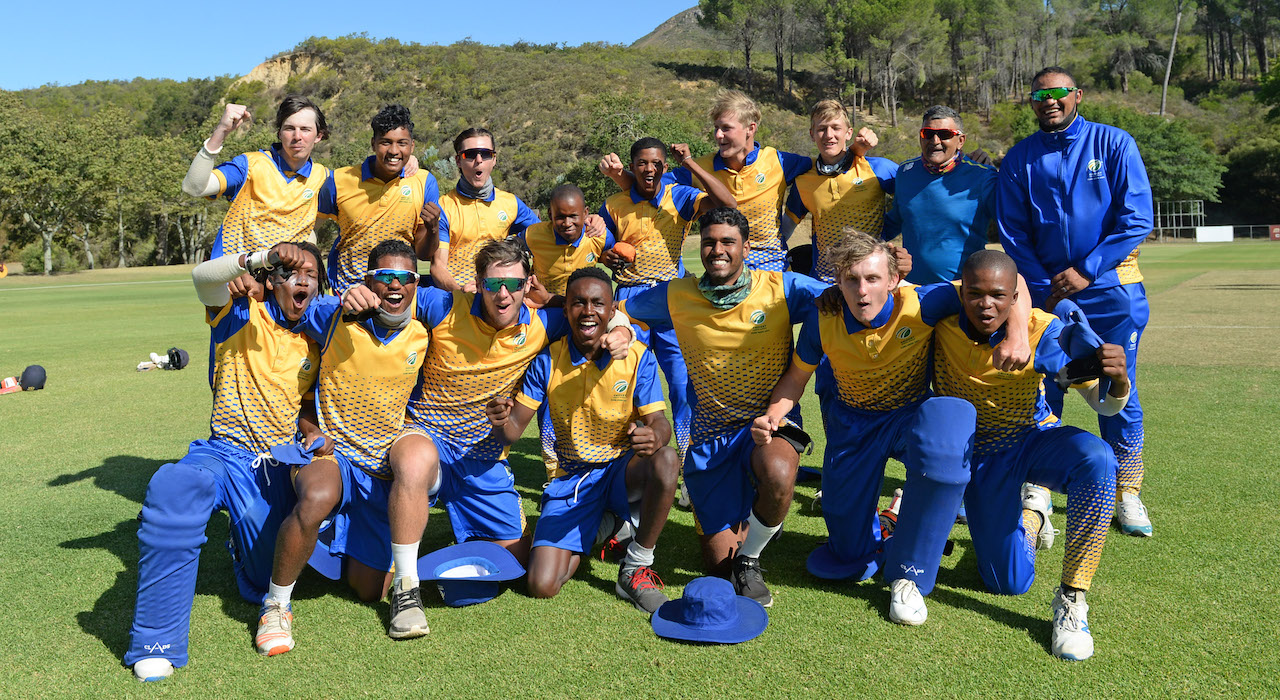
‘Graham October is first a father’ before being a coach
By Marc Jacobson
‘Graham October is first a father’ before being a coach
Victorious Cape Cobras Cubs assistant coach Graham October has attributed mental and psychological wellness as the undertone for his team’s successes in Paarl last month.
The Cobras Cubs performed superbly during the Cubs Week, winning all five of their 50-over matches, including a nine-wicket drubbing over the Titans Cubs in the final.
October, who is also a talent scout for Cricket South Africa (CSA) and Western Province (WP), believes that he and head coach Gurshwin Rabie aimed to “empower” the players off the field while entrusting Daniel Smith’s leadership qualities on the pitch.
Smith, who opens the batting, enjoyed an exemplary campaign, scoring 61, 72, 58, 33 and 77 not out in his five respective innings – amassing a superb average of 75.25.
However, for October, the team’s polished performances run far deeper than individual performances, but rather it was about mentorship and commitment off the field.
And although it was “always our intention to win the tournament”, October placed a great deal of emphasis on “occupying” the players outside of the matches.
“It’s about building momentum and keeping these boys occupied while having fun among one another,” October told Cricket Fanatics Magazine.
“It’s not only about cricket, but also about up-skilling these youngsters so that they can start thinking for themselves and making decisions.
“Coach Gurshwin and I made a good team and we operated as parents while managing the boys.”
October also said he was “acutely aware” that the Cobras Cubs had struggled in recent years, as well as the Cobras senior side, which emphasized his philosophy of honing headstrong and characterful players first and foremost.
“It was about us backing the boys,” he said. “These youngsters all have one problem – the fear of failure.
“We just have to tell them that it’s okay to fail and that it’s not the end of the world. We just try to build a base of camaraderie.”
The side had to go into an isolation bubble for two-and-a-half days before their Cubs Week commenced, which posed various challenges from a personal standpoint for certain players.
However, October said they used this period as a time for warming up to the prospect of playing with one another and against other top-class oppositions.
“Everyone integrated so nicely within the team,” he said of the players who hailed from different parts of the Western Cape.
“Those two-and-a-half days were a good chance for everyone to get to know each other and to enjoy each other’s companies. We just took it from there and the players bought into our plans.
“It was the little things that mattered. For example, no one was ever late for buses or for meals and team meetings. One player looks after another player and they take responsibility for each other.”
He added that it was these mental strides that aided the team in developing a winning mindset.
“Winning has brought the group closer together so they started to believe. We never had any issues in the camp with any players who focused more on themselves.
“We’ve addressed that right from the outset, as boys at this level can be very bullish because they want to make the national side.”
The team’s main goal was to play the “perfect game”, which included winning by bigger margins as the week wore on. They pulled it off in the decisive final.
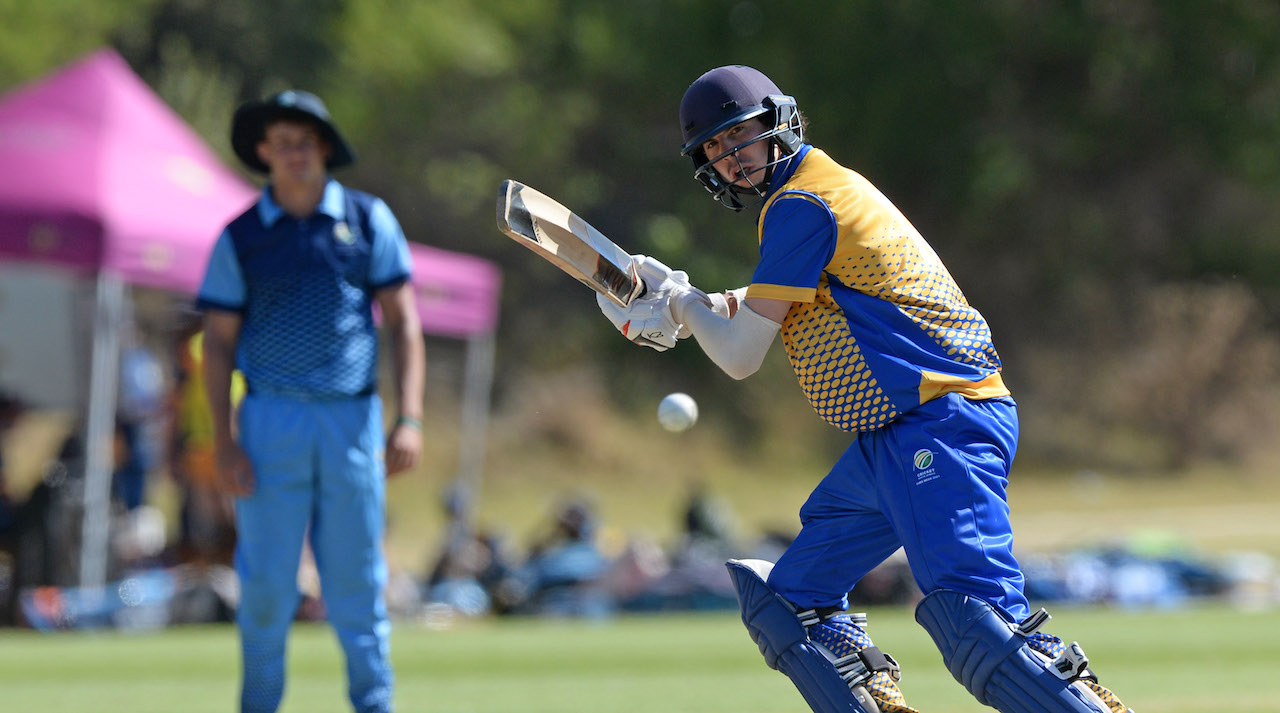
October, who used to be a certified plumber by trade before turning to cricket as a profession, said it was important to implement “the care factor” within the team to get the best out of the players.
“It’s about caring about their holistic development and some of these players came with massive challenges.
“To come out of a shack and live in a hotel for the first time; [some of them] didn’t even know how to use the shower. And then they must still live alone [in isolation].
“Some of them couldn’t come with the right gadgets, so we had to bring along laptops and tablets to set them up and keep them busy. They came with these challenges and then they still had to perform.
“Graham October is first a father,” he said of his coaching ethics.
“I care about you before we go on to the field. I want to get you into a good space off the field. Amongst our group, we had matrics who were all worried about their matric exams.
“And if you haven’t eaten or you’re worried about something else, then you won’t perform.”
He prioritized learning and teaching to help the players develop more as individuals, rather than just cricketers.
He also had “honest conversations” with some of them, but, overall, he wanted to create “an environment that is fun”.
“I was also hard on them, but they can see that cricket is not the be-all and end-all. It’s about their lives. If these boys trust you, then we can go to war together.
“We need to have trust and mutual respect between management and the boys – and that is where they start to believe.”
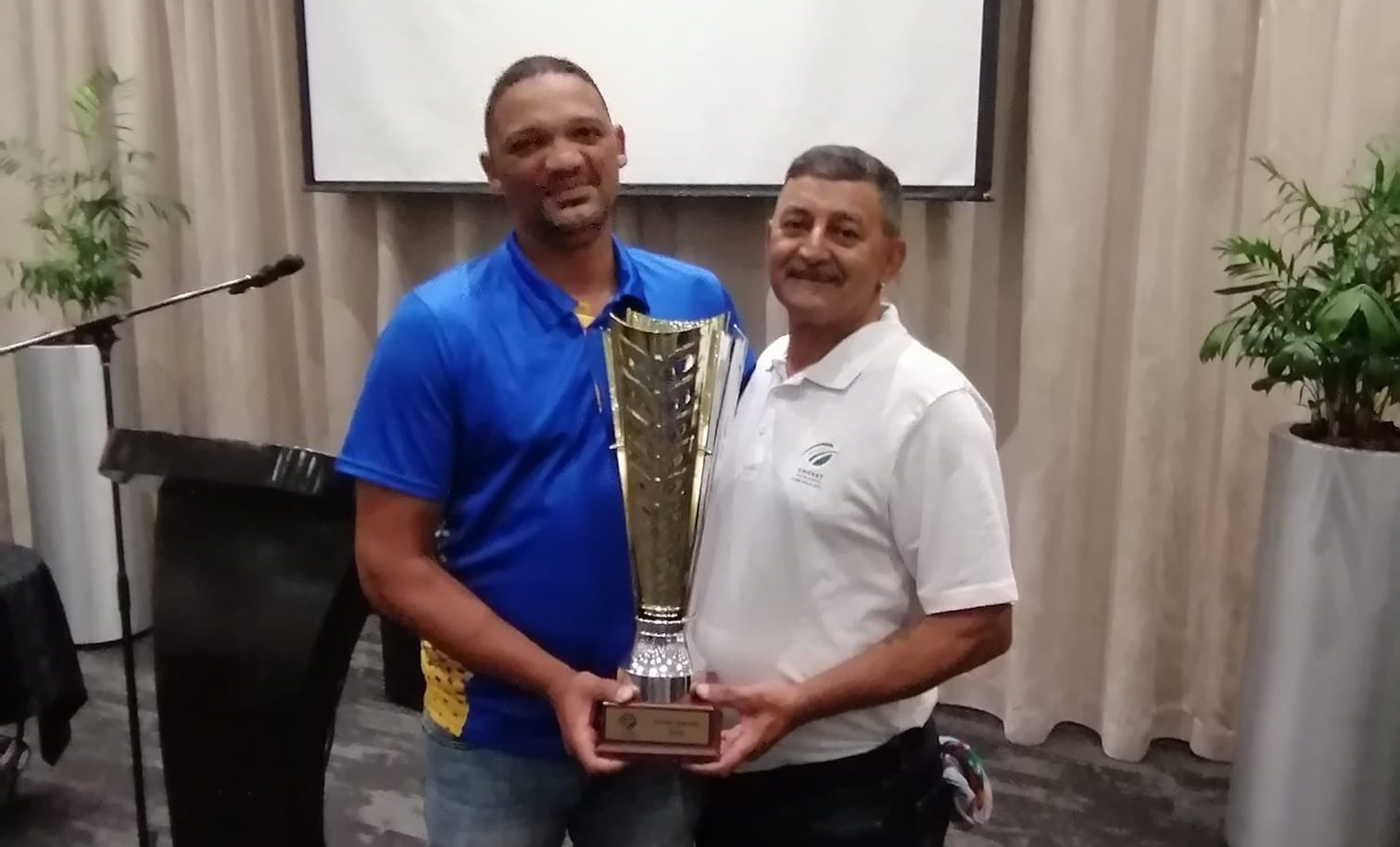
Players of this age category need to be, at times, treated with assurance, especially in cases where they do lack the necessary self-belief.
“Some of them are timid and sensitive,” he said.
“The one boy genuinely cried because he went out and he believed he didn’t contribute. He wanted to contribute with the bat.
“We had to sit him down and tell him he had saved boundaries and took two brilliant catches. We played five and won five, so how did he not contribute?
“That is the types of things we had to manage and that’s where parental guidance came in.”
The Cobras contributed four players to the SA U19 15-man squad, including Smith, who has been tasked to captain the side. The other players are Darian Naidoo (bowler), Kaden Solomons (wicketkeeper) and Asakhe Tsaka (bowler).
October has been in his current position for seven years and has been involved in the game for close to 40 years.
The 55-year-old said he has tried to facilitate opportunities for more players in the region, specifically for players who weren’t traditionally on the radar.
And although the Cobras senior side has been struggling recently, he said this “doesn’t reflect” what the province’s youth systems have achieved, noting that the WP U15, U17 and U19 sides have all progressed to various finals, with some generations winning it.
“I’m happy with the work I’ve been putting in and done and I’m happy with the players I’ve brought to the fore – there’s a lot of them coming through.”
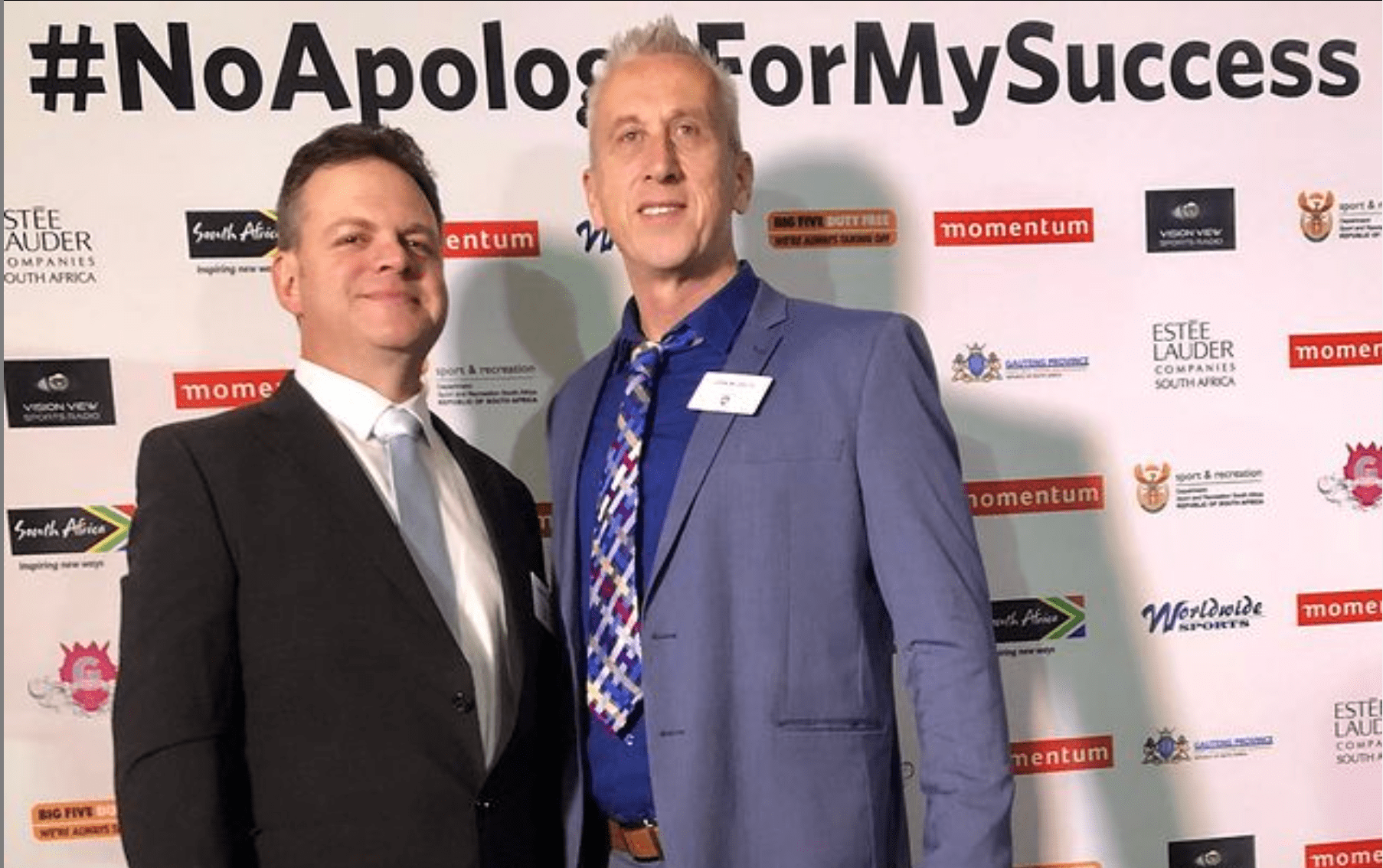
Q&A: Shawn Belluigi
By Jessica & Janine October
Talking about schools being “all-inclusive”, what does this mean to you and why did you think this is important?
This is not an easy question to answer in one sentence and I will not give the problem justice in a small paragraph. All-inclusive means that a school needs to be open to all kids from all backgrounds no matter their financial situation, race, religion, gender, etc…
I am not saying that I am against private schools but if a kid manages to get into a private school through a bursary then they need to feel accepted and welcome and not made to feel unwelcome just because their parents cannot afford to go to the school.
It is very easy to say that kids need to feel welcome but it doesn’t stop there. If a child comes from an environment where they cannot afford private coaching or simple things like shoes, then the school needs to find a way for that child to be able to compete with other kids that can afford these things so they are judged on merit and not just on their financial situation.
There is also the side where there are kids that need bursaries to attend schools, they know that if they do not perform then they will have their bursaries taken away from them and so there is additional pressure on those kids that others do not face.
These are just some very basic examples of ‘all inclusive’ but there is a lot more to it than that. I believe that we need to provide an environment where they have an equal opportunity to perform. No country in the world has been successful at this but we all work hard to try to solve this problem as well as we can.
I recently ran a webinar talking about inclusivity in sport. We spoke for an hour and we did not even get close to covering the problems that kids face and we did not even have someone to represent women in sport.
Some cricketers have voiced their concerns regarding coaches who come across as “egotistical” and have “negative effects on players” – on a provincial level. With inclusivity in mind, how can we address this and ultimately combat it?
I deal with a lot of leaders in sport and the best of them are not egotistical at all. True leaders and true winning coaches are those coaches that do not have massive egos.
I organized a Powerade Academy Seminar where speakers from various sports spoke to coaches about various aspects in sport. Gary Kirsten told the coaches that when they become coaches they transfer their ability to achieve and be in the limelight to their athletes.
It is up to their athletes to perform and have the limelight. He went on to say that a coach needs to have the ability to tap into an athlete and get them to perform at the best of their abilities. This does not only apply to your top sports people but also to your kids that just enjoy playing sport.
They need to be allowed to play to the best of their abilities. When Gary left the Indian team, he said, Sachin Tendulkar’s wife came to him and thanked him for making Sachin a better person. That is the sign of a good coach.
Malibongwe Maketa said that "A coach is in the privileged position where, every time you go to the sports field, you can change someone’s life." As a coach, you have to decide if you are going to change the kid's life positively or negatively.
One of the problems is that coaches are judged on their results and their livelihoods all come down to what the kids do on the field. So when a team is not doing well then the coach might lose their jobs.
Some of the schools need their teams, especially in certain sports, to perform as a marketing strategy for the school to attract sponsors and to attract kids to attend the school.
Schools seem to lose focus on the fact that they are educational institutions, winning and losing is part of the educational process, and the focus of the school should be on education.
Another side to this ‘ego’ in sport is that, often, especially in high school sport, women battle to find positions in a school as a coach, women cannot coach male sports and men can coach women in sport.
This is starting to breakdown and people like Claire Terblanche and Simphiwe Dludlu are breaking this down.
It is hard for me to understand why women cannot coach when they have superior experience, qualifications and results than a male coach. There are now women coaching in the NBA and NFL.
If they are breaking down this stereotype in top-flight sports like that then in school sportswomen should dominate considering that there are more female teachers than male teachers.
Some coaches are not interested in learning from other coaches. I have seen a lot of this where coaches say that they know everything. They do not have to listen to other speakers, other sports, their teams and kids are unique, etc.. this is ridiculous.
I run school sports webinars and I do it talking about various issues in various sports. The coaches that I see attending the webinars are the Sundowns coaches and scouts, rugby 7’s, Tuks, etc… people that achieve and are at the top of their games.
If they can learn from what I have to offer and they are the leaders then so can school coaches who do not know as much about the sport.
Sometimes this is a problem with ‘Zoom Fatigue’ or that teachers a very busy trying to catch up with their work, all understandable, but others do not need to attend because they think that they know more than the speakers or they believe that they cannot learn from other sports and sports personalities.
Did you know that Enoch Nkwe has learnt from football (soccer) coaches, NFL coaches, cricket coaches, etc…? Everyone has a story and you can learn from everyone, no matter who they are.

What sparked your interest in school level sports in Africa?
For me, school sport and amateur sport is the true essence of the sport. I love to see what teachers, schools, clubs, franchises and sporting federations are doing to grow the sport and I have the privileged to be part of these journeys.
I love watching these kids play. Some people think that it is an inferior sport because, if you want to watch sport you would only watch international sport where you can see the best players in the world, but to these kids, their games mean just as much to them as what a match to an international superstar.
But whilst the international superstars will get paid and get some sort of recognition, for kids they get to dream and their lives can change due to what they do on the field.
I also think that sport is an easier way for kids to have the opportunity to learn about life, make friends with all sorts of people that they would never have met if it was not for the sports field and for some kids it is a way for them to get out of the troubles of daily life, even if it is only for the hours that they are on the sporting field.
Describe your typical workday as the General Manager of Intune Communications and Entertainment.
Most of my day is spent learning and finding ways where I can assist coaches all over Africa to develop their programs and provide opportunities to their kids. My goal is to directly impact over a million people in Africa.
My typical day is to catch up on emails, check up on all sporting scores including some of the amateur scores, then I spend the rest of the day contacting speakers for my free webinars, contacting leaders in sport that can assist coaches from all over Africa in developing their sports for our Growing African Sport seminars that will be run in 7 countries in Africa, the next being in Ghana.
Then I assist my team in creating PR and social media plans for my clients, finding interesting stories about great people in sport that can assist my clients, speak to various sporting bodies to see what they are up to and if I can assist them or advise some of the sporting bodies, and then, if I have some time, continue to study for my mentorship, Life Coaching and NLP programs.
You have worked with many coaches, sporting unions, sponsors and even athletes themselves. What is your approach when engaging with these individuals from different backgrounds?
My approach is very simple, I treat everyone the way that I want to be treated. I treat everyone as equals and with respect. I don’t care if you are one of the groundsmen at one of the schools in the townships or rural areas that I go to or if you are the CEO of a business or a top athlete.
I believe that it takes everyone to make the world go round and each one of us has our roles to play and needs to be respected for their contribution.

You have also been involved with the Khaya Majola Week. How do you think this contributes to promoting and developing youngsters in the game?
The Khaya Majola week is a fantastic week, I love spending time watching the players and speaking to everyone involved. I have seen some amazing things there like Daryn Dupavillon taking 7/18, Sinethemba Qeshile and Bryce Parson’s hitting outstanding hundreds, Lifa Ntanzi destroying Eastern Province and nearly pulling off an unlikely win, Siya Plaatjie bowling out Gauteng to record Western Province’s first win against Gauteng in 7 years, and so much more.
I have seen how the tournament has grown since I started working there in 2010 until now and how many outstanding players there have been in the system. The tournament is getting better and better and people like Niels Momberg and the unsung hero Morgan Pillay run a fantastic show where the kids have the opportunity to have life-changing experiences.
I also love the fact that I can introduce players to the media long before they are even known. I got Kagiso Rabada on TV long before he played in the U19 World Cup where he did so well and where he suddenly became a household name. He is just one of many players that I have seen grow up in cricket and there will be so much more.
Kids love seeing what their peers do in the tournament and take great pride when they say that their school produced x amount of players that have played in the Khaya Majola Week.
Most media are also only interested in the national side but all of these guys started somewhere and that was at the Khaya Majola Week. It was also with great pride when I was contacted by some of the international media when the U19 World Cup came to South Africa in 2020 to assist them with profiles of our players.
What effect has the pandemic had on the tournament, specifically last year? Are there prospects of hosting it this year?
The tournament was cancelled last year due to the coronavirus but there are good chances of it happening this year. Cricket South Africa hosted a very successful Cubs Week and showed that it can be done.
In talking to Neils Momberg from Cricket South Africa, he said that it was not easy to host and cost quite a bit more than normal but it is possible. However, we all hope that the coronavirus will be under control at the end of this year so the tournament will still be hosted.
The impact of not having the tournament is relatively big but we will only see the larger impact in the future. I think that there will be more of an impact on younger levels like KFC Mini-Cricket.
For the various provinces, there were some issues because there were not opportunities for kids to perform during the year and for the late bloomers to be picked up.
If you think about a player like Jack Lees, who was always a good player but had a fantastic 2019 season and went from a good player to a SA U19 World Cup player because of what he did in his matric year.
But the impact is far greater for other kids, this is where kids get noticed for university bursaries and some of the kids would have missed out.
Some kids do not have a future in cricket and sports bursaries were not important for them, this would have been the highlight to their cricket careers. This is what they have been dreaming about for a large part of their 12 years at school. This dream of theirs has ended.
The KFC mini cricket program allows youngsters to play the game and enjoy it simultaneously. This has allowed you to encounter many schools in less fortunate/rural areas around the country. What are some of your experiences when working with talented youngsters regardless of a lack in facilities, opportunities, etc.?
One of the best cricket schools in South Africa is a small school in the Eastern Cape called Nomandi Junior Secondary School. The school is in an area between Mthatha and Port St Johns. The school has got 1 electrical plug and no running water.
It is not that well known because it does not extend until matric so a lot of the kids will move onto other schools and hope that other schools have got cricket for their matrics. At one stage this school had over 30 kids playing cricket in the various KEI age groups (male and female).
This school has been coached by Mfuneko Ngam on 3 occasions as part of the KFC Mini-Cricket kids vs Proteas series, they have played against the Proteas once and they have travelled with the Proteas where they were ball boys and boy girls in a KFC T20 international in East London.
This school is one of many examples of fantastic cricket playing schools all over South Africa that come from underprivileged backgrounds. The talent is out there and the future of cricket in South Africa is positive.
Whilst the public only thinks about cricket and the job that Cricket South Africa has in identifying future Proteas, this is the smallest of the jobs that Cricket South Africa faces.
If you are going to a sporting body or even a sponsor for any sport in South Africa I believe that you need to recognize the inequalities of the past and present where we have got millions of people suffering from a legacy that will be part of our lives for years to come.
Cricket South Africa does an amazing job in identifying this need and assisting coaches, schools and clubs in assisting these kids and enabling these kids to have a future in South Africa. It is still a work in progress but they have made an impact.
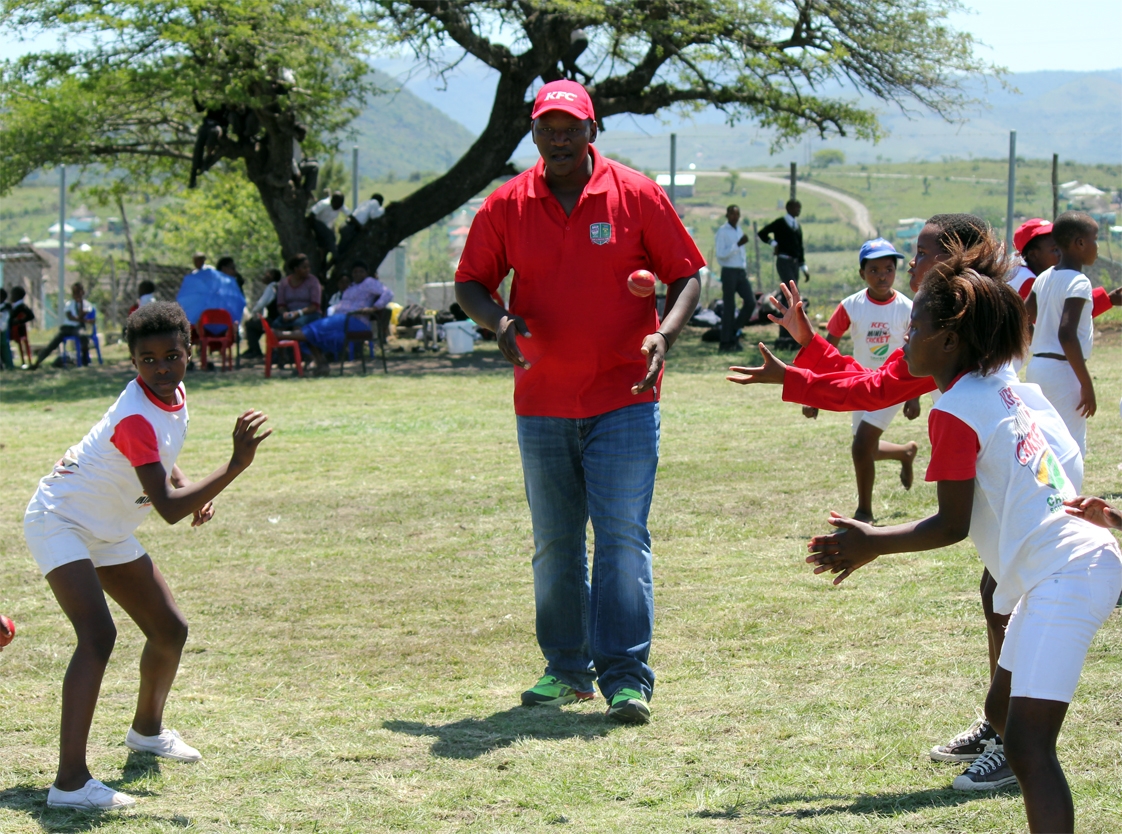
What are the struggles these youngsters encounter daily in less fortunate environments?
Some kids come from gang-run areas and there are safe havens for these kids where they can play cricket, stay at schools and keep away from the streets whilst having fun playing cricket. Robin Peterson helped us with one of these schools.
Bayview Primary school provides a safe-haven for kids in Port Elizabeth and they also use Gelvendale Cricket Club to coach the kids. The kids were shocked to know that Robbie grew up in a house a block or two away from the school and that he went on to play cricket for South Africa.
When Robbie spoke to the kids and explained this to them you could see that he had already made an impact in their lives and they could see that there is a future for them that does not involve gangs and violence.
There are also areas like Cape Town where ex Western Province player Jock Mahoney is part of The Ark City Refuge where they assist homeless men, women and children and they use cricket and other sports to uplift them and give them hope.
Other schools deal with poverty, drug abuse, learning disabilities, etc… Sport, in general, is so important to these schools, it is easy to educate kids on life lessons, coaches fill positions like mentors, parent figures, councillors and many more.
Patrick Mabasa is now becoming a household name for what he is doing in Giyani including what he does in helping kids learn to read and he is also using cricket to uplift his kids and has moved past just coaching cricket when he started, together with a team from his community, a sports club where they managed to chip in and build sporting facilities for all kids.
Cricket South Africa quietly assists all these people to do their jobs by providing kit, mentorship programs through seminars, educational programs and support.
What is KFC mini cricket and CSA doing to promote cricket to youngsters? And how do they ensure that the youngsters are placed in more conducive environments, allowing them to see beyond their circumstances to start achieving their goals?
I am not an official KFC or CSA spokesperson so I cannot speak from their perspective but as someone that works in the programs I know that they are very active in promoting the game to youngsters.
It must be remembered that the KFC Mini-Cricket program is the entry point in the CSA pipeline and that there are over 120 000 kids that take part in the program so not all of them will be future proteas.
There is some talent identification but it is not the main focus. The main focus is to get kids into the program, get them active playing a game that they enjoy, provide kit to the kids and schools so that they can play at an equal level and this helps with inclusivity.
Two of the things that I love about KFC Mini-Cricket is that kids can play their natural way and they get good coaching that will allow them to play with their flair, the second is that all kids have a chance to bat, bowl, field in every position, no matter their abilities.
We lose a lot of kids to hard-ball at this age group because hard-ball cricket you need a bat, you need pads, the better players get to bat, bowl and field more and the late developers or kids that are not as good drop out and stop playing because they don’t get a chance. This is not the case with KFC Mini-Cricket.
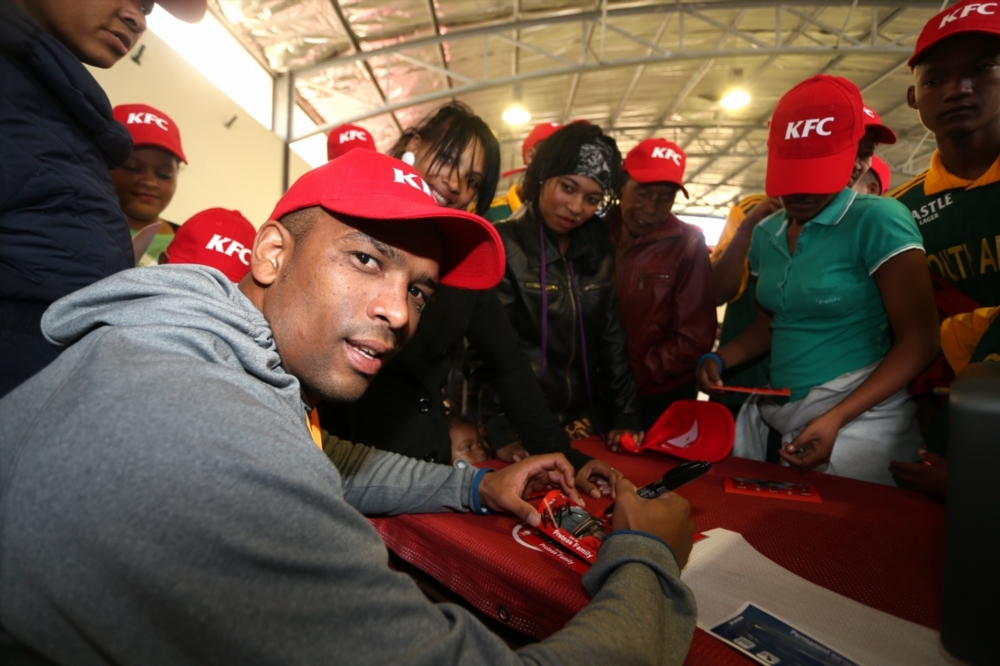
How do we address the gap between junior and senior-level cricket, in terms of coaching and playing the game?
Cricket South Africa are trying hard to work in this space. In the past, the final match of the Khaya Majola week used to be SA schools against a provincial/franchise side and the SA Colts team used to be against the semipro side. There were occasions where the SA Schools and SA Colts teams used to win.
In recent years they scrapped the game because there was a huge gap between the sides. You can already see that a player that has been training like a pro for 7 days a week, 365 days a year has grown so much in 1 year that they have left their mates at school behind.
I believe that what CSA are doing this year in getting the SA U19 team to play in the 3-day cup is a step in the right direction. I think that the kids need to get more opportunities to play in pro or semi-pro sides.
Unfortunately, the schools do not like that because the kids will not play for the schools and the school might lose a game that they could have won with that kid. But that is what we need to do.
When our kids play against Pakistan, Afghanistan, India, Bangladesh U19 teams they are playing against kids that have got 10-20 semipro or pro matches. These kids are at another level, it has nothing to do with talent but has everything to do with opportunities.
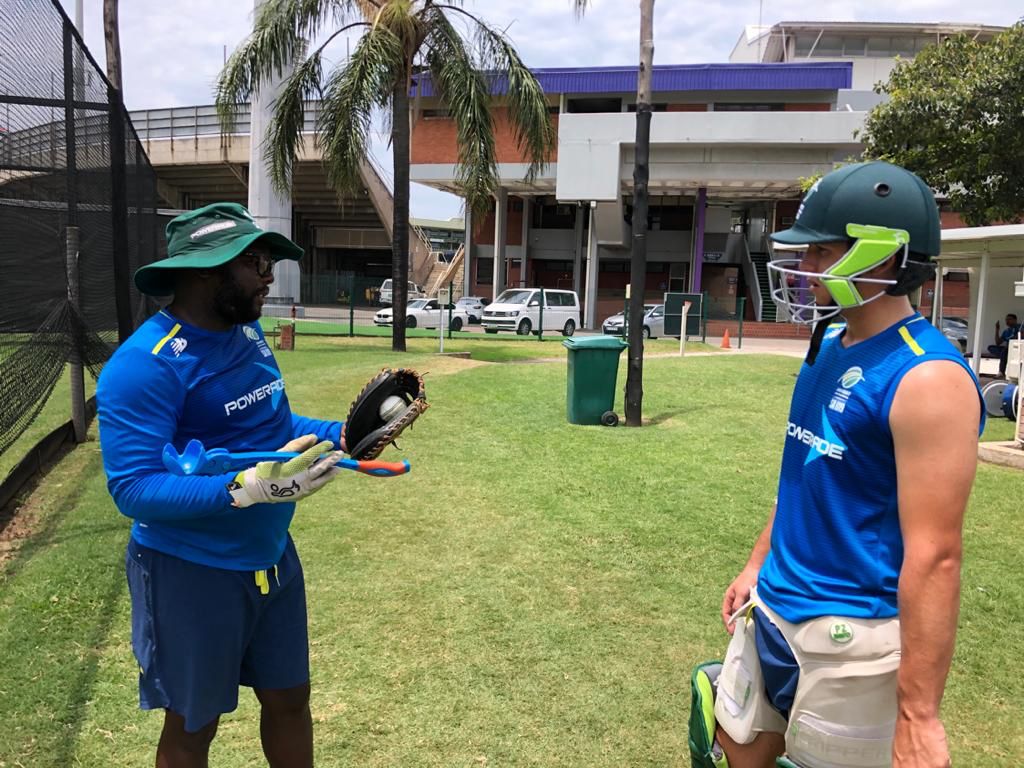
Gauteng aims to instil belief in the youth of South African cricket
By Emily Norris
The Central Gauteng Lions have a strong academy setup that aims to instil belief in young cricketers, no matter their background or circumstances.
Siya Sibiya, the CGL U19 and Academy Head coach as well as SA U19 assistant coach, gives insight into the youth academy setup and discusses what has made the Lions so successful over the years.
The CGL look to start engaging the players that they identify as potentials for the academy, from Grade 10.
The focal point of the academy isn’t necessarily only producing cricketers for the senior provincial side and the Lions, but they also focus intensely on a cricketer's life outside of cricket by providing the mentorship they need.
When looking at players for the academy, there is a very specific strategy that the CGL coaches make use of.
“We look at the skills needed at the Lions so that we are always aligning with what our franchise team needs. We have like-for-like replacements in skills. We have similar types of players playing various roles that can be replicated in our franchise team," Siya Sibiya told Cricket Fanatics Magazine.
"We generally go on looking at what our senior coach’s needs are; we will tell him what players we’ve got, he’ll give us the needs, and then we will go and either find that player if we don’t have him, or we’ll develop that player.
"Or we will just tell him that we’ve got that player but he’s only U13 now, so we’ve got 3 or 4 years of work to do within our pipeline to make sure that we get that player up to speed and we put the full focus on their development – on and off the field.”
Gauteng supports its players in various ways. It goes as far as transporting their kids, paying for bursaries, there’s the assistance of Cricket South Africa, and the various sponsors and partners that they have.
There’s a lot of work that goes on behind the scenes to make sure that the development structure is as strong as it is.
"Strength is not necessarily judged on solely always winning weeks, but constantly producing SA U19 players, constantly producing players that end up leaving the province and going to other provinces and being ready to perform in those spaces.
“This will shock you, but Ryan Rickelton played U17B in Gauteng at a point, because there were areas that the union and the coaches at the time felt like he needed to work on, and he went and he scored a lot of 100s there, and you know, the rest is history.
"So, the strength of the programme and the recruiting structure, and the pressure that Gauteng players are under really does show when they go to weeks, when they make a step-up to another level, because the competition is so big.
"If you’re not scoring runs or getting wickets, you are going to battle to make a side and to get the recognition that you maybe feel you deserve.
“The tough job is sitting with the U15 coach, Bongani Ndaba because he’s got to dissect from the U13s who are the guys that have the most potential to represent the Lions.
"We don’t pick players that have the potential to represent a provincial team that year, we’re looking at someone that we can spend the time developing because they’ve got the DNA of fitting into the Lions’ way of doing things.
“There are a lot of young black players that are emerging through our system who are performing. And then obviously if you go historically, guys like Enoch Nkwe came from Soweto, ended up at St. Stithians, played for the Lions and the Highveld Strikers at the time, and now he’s the Proteas Assistant Coach.
"So, this system is healthy, it is fluid, it is for transformation; we’re not saying we have the perfect blueprint, we have discussed areas where we can improve."
Gauteng and its academy aren’t just worried about the players’ cricketing performances alone, but also their all-round lives.
“We try and look at a holistic, and I really want to reiterate this, a holistic approach in the development of each of our cricketers that are identified within our system.
"If there are issues at home, then those challenges will affect what happens at school, and what happens on the cricket field.
"So, as a coach, I find myself bouncing from school to club coach, to finding out what’s happening at home with mom and dad, or whoever’s looking after them, and making sure that we make a concerted effort to engage in a positive light of trying to help and come up with solutions as a collective, for the betterment of that individual.
“Does the player have food at home, does he have a roof over his head, does he have the equipment, can he afford all those things – those are the big challenges that we face – not just as Gauteng but I think as a country because of the history that the country has. That’s our biggest challenge – trying to level the playing fields”.
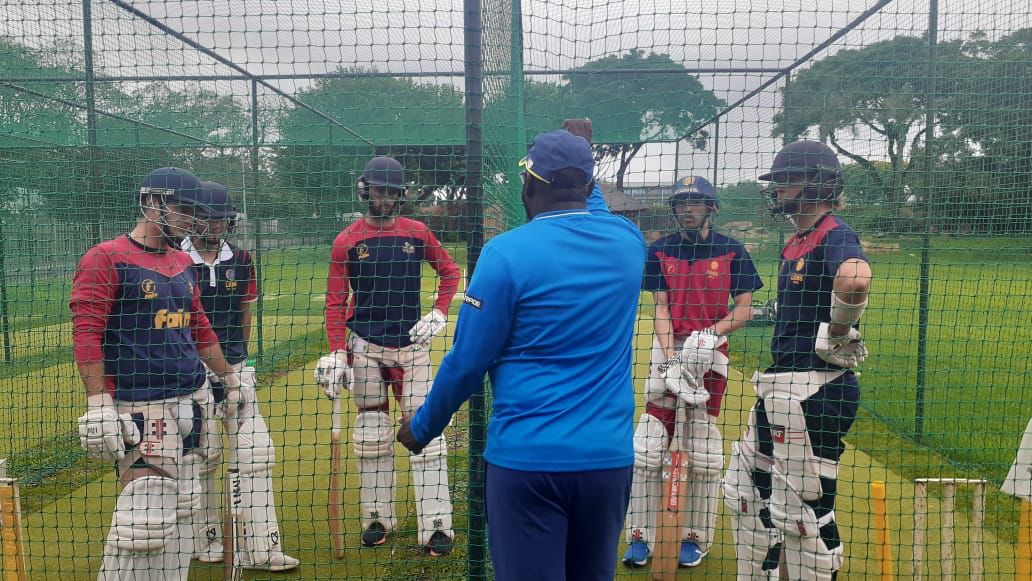
Then there are also mental issues.
“That’s why I have two people that are qualified psychologists in sport, that help tackle those issues, or at least unearth them so that the players can talk about them. But, if it is beyond our control, then we would get an outsider to intervene and assist in that regard.”
Part of what makes the academy successful and what helps players to make the senior provincial side later in life is the academy replicating the formats that the senior provincial side play.
“What I try and do in the academy space is – the academy replicates the schedule of the senior provincial side. So, in the academy, there is 3-Day cricket, T20 cricket, and 50-over cricket played.
"Sandile Masengemi, as the senior provincial coach, will never pick a player for 3-Day cricket from Premier League club cricket where they play 50-over cricket only.
"He will identify the player, give me a heads up, we will pull that player into the academy, he’ll train with the academy, we’ll do a process of identification insertion, coach them, play them in 3-Day cricket, and then they will make that transition into the senior provincial side where they are available for, or qualify for, selection through having played a couple of 3-Day games."
It sounds like a rigorous process for a player to go through, but Siya believes it's a very good channel for the coaches to see the shortcomings of the player and then for that feedback to go back to the club and circulate back to Gauteng so they can monitor that player’s progress.
The mentality of the coaches is very important when it comes to the Lions’ setup.
Their head coach Wandile [Gwavu] made a bold statement during the Covid 19 lockdown that is a clear portrayal of their ethos.
"For us to be successful this season, we have to master our spaces.
So what this means is to be the best in the country at their jobs. Be the best U19 coach, be the best U17 coach, be the best U13 coach, be the best semi-pro coach.
"And it speaks to him," Siya added, "be the best franchise coach. If we can all be striving to be the best in the country, we are going to give our best to our players.
"The fluidity of the communication and the lack of ego is what makes this machine work. That’s been the strength of this programme; and the assistance from various factors and various people that do care about the game and care about the players."
Andrew Rasemene is a right-arm fast bowler that played at Free State and Northerns before he ended up at Gauteng in their academy space.
His story is a unique example of the efforts put in by coaches like Sibiya.
"Before I had even got to Johannesburg, Andrew, I don’t know how he got wind that I was going to be the new coach, gave me a call and he said to me ‘look coach, what do you need me to do, I’m desperate to get better and I’m desperate to fix things.'
"We went on a journey with Andrew, with the assistance of the SACA PDM. I looked at this boy’s eyes and it struck me because we as adults get caught in the [naughtiness] of a kid and we forget that he is just a kid still.
"I have a lot of respect for what he’s achieved. Besides his cricket achievement, he’s turned his life around – he was a bit of a naughty boy, he got into trouble at UJ with the coaching staff there.
"This guy making his franchise debut at the Wanderers against the Lions, it was sad to see him playing against us, but when he phoned me the night before to tell me, ‘look coach please don’t say anything to anyone but I’m making my debut tomorrow’, I couldn’t believe how far he’d come.
"To see that he had taken all those learnings and lessons to heart and being disciplined – he made those changes. It just really brings joy to me - [by] just backing someone and sticking to them and being loyal as a coach, being loyal as a mentor, and being loyal as a friend also because you need to be that too – besides being a parent, a mentor, a coach, and an advisor.
"So, I’m very proud of him, proud to have been involved in his journey. Most importantly, he sees the rich value in being a great human being and a great teammate, and a good husband and a good person all-round. [He sees this] as the gold medal.
"It was emotional for me to get that phone call when he told me ‘you’re the first one I’m telling, I’m making my debut’, and I nearly broke down into tears, it was pretty close actually.
"Just speaking about it now gives me goosebumps. It’s just a blessing to be involved in not [just] being a cricket coach, but changing people’s lives and contributing to that in the smallest way that I can.”
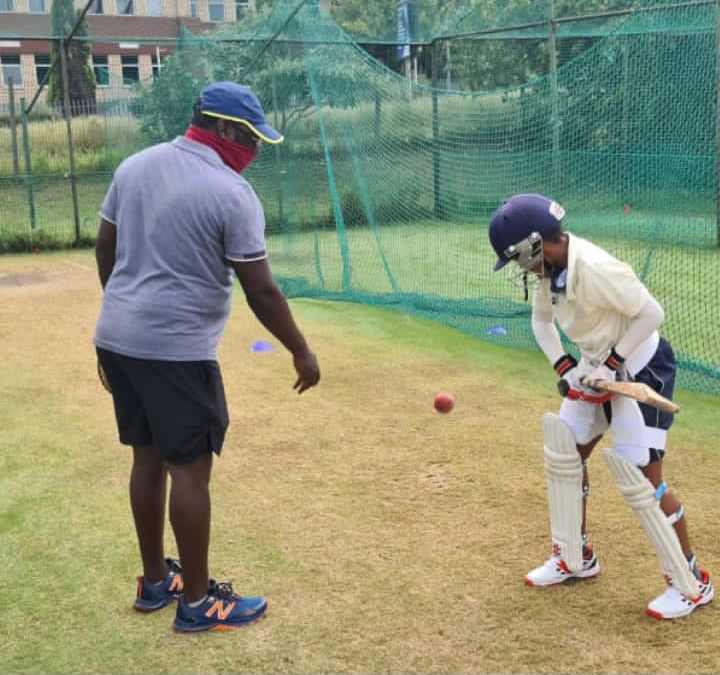
When asking Siya what it is about the Lions that makes any young cricketer, despite background or circumstances, believe that he/she can play for the Lions and the Proteas, his response was firm:
“It is a culture of no-ego from our players. We’ve got a mentorship program – our players in this province get to rub shoulders with our professionals.
"If you can see Kagiso Rabada in the Wanderers indoor nets helping you with your bowling as a U14 or U15 boy, that’s enough motivation to tell you that you can dream big. And we tell our boys, it’s ingrained in them – you dream big and you dream to be the best in the world. Doesn’t matter what your background is, doesn’t matter where you come from, doesn’t matter what your challenges are, we’ll help you with that.
"So, the involvement of the professional players being so close, within touching distance of the players and the interactions that they open themselves up to, is good.
"That’s what I think keeps our players believing. They see Kagiso driving into the Wanderers and coming in to do target bowling, which creates a desire to have a strong work ethic.
"I think the brand of Lions cricket is just so powerful, and so strong and connected, that it allows any and every kid to believe that they can play for the Lions.
"The belief that is instilled in the young players at Gauteng is so great that no kid in Gauteng that is involved in our system does not believe that they can play for South Africa or does not believe that they can play for the Lions.
"That’s what this is about for me, that’s what burns that fire. The brand is strong enough to help and keep that fire burning in each kid.”
Offside Maidens
Daily Show | Let's talk about it
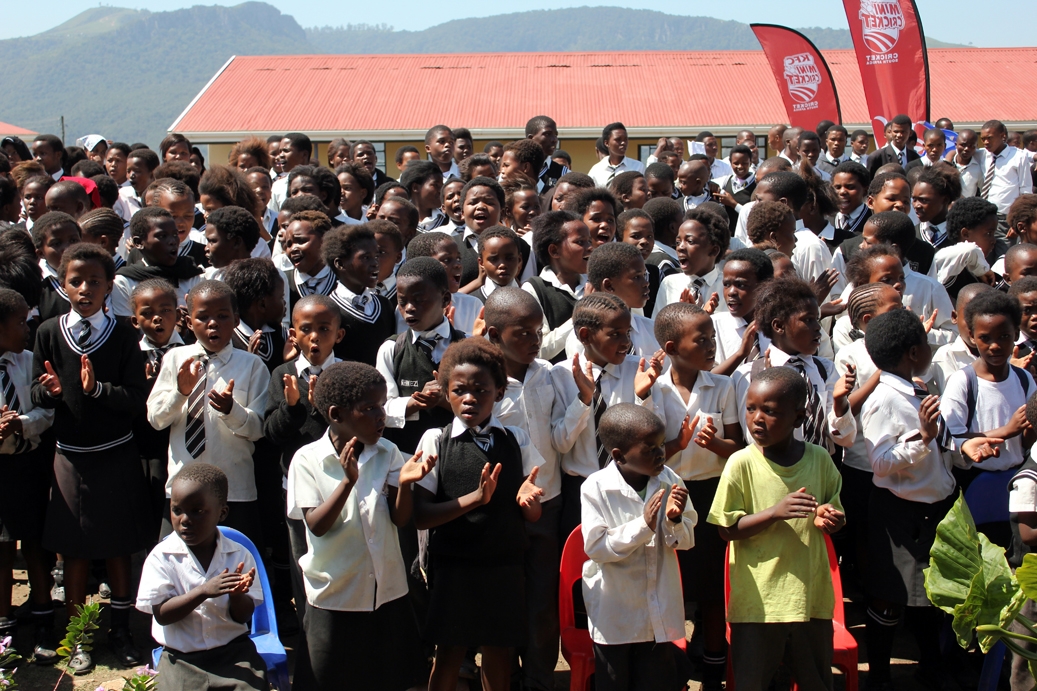
By Lucy Rees
In 2017, the England and Wales Cricket Board launched a new programme for all clubs across the two countries, All Stars Cricket.
This programme was optional, but encouraged, cricket clubs to get more juniors at a younger age at their clubs. These juniors will be the future of adult teams and could even be the future Internationals.
So, what is it?
All Stars Cricket is for 5-8-year olds, where they train for 8 weeks in a fun and friendly environment all whilst learning skills associated with the game we all love, cricket. Upon registration to the club that is holding the programme, the child then receives a backpack, cricket set, t-shirt and cap.
There are over 2,200 clubs across England and Wales who have registered to hold All Stars at their venues.
As soon as a club registers, gets their activators/coaches trained up and has received the application of 10 attendees, the club gets the go-ahead and an All Stars Centre package containing flags, banners and a kit bag full of stumps, bats, cones, bean bags, and so much more.
The basics covered in All Stars are:
Batting – hitting a moving ball
Throwing – underarm and overarm
Catching – small and large balls
Bowling – overarm
Running – lots of movement
Teamwork – fun games with friends
Communication – the basics of cricket
Spirit of Cricket – how to respect others
With club cricket on the rise in South Africa, I think a programme similar to this would benefit the country massively.
After New Zealand took something on a few years before ECB, which has continued to be a success, and All Stars still going strong four years on, I think many other cricketing nations will be catching on.
England Test captain, Joe Root and all-rounder, Ben Stokes both spoke out on the launch of All Stars Cricket and said if a programme like that was around when they were at that age, they would both be in it. With that said, I think some of the future England stars are definitely taking part.
The programme was also designed to have more girls involved in cricket, which happened as we saw a lot more girls participating at All Stars level.
If All Stars helped a big portion of cricket clubs in England and Wales gain juniors, imagine what it could do for Cricket South African and their cricket clubs.
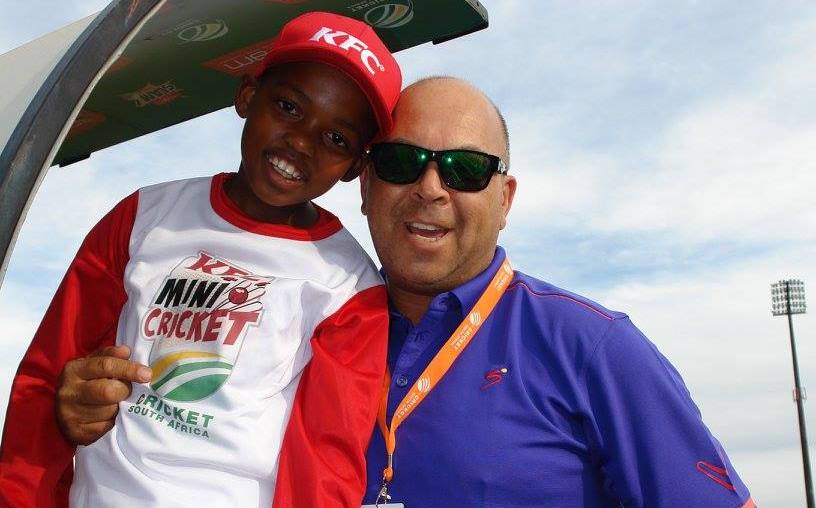
SA School’s cricket still key to development and success of the game
By Obakeng Meletse
01 March 2014 needing two runs to win, the first ball of the 43rd over, Bradley Dial hit a friendly long hop from Saud Shakeel down the ground and South Africa erupted. Similarly to the famous 438 game between South Africa and Australia, players and coaching staff ran on to the field in celebration and this time it was for much more than a series win, and for the first time in South Africa’s history, somebody else was on the receiving end of the choke.
Aiden Markram became the first South African captain to win a World Cup beating Pakistan by six wickets and winning the Man of the Series in the process. Markram unbeaten on 66 off 125 balls led the SA-U19 team to their maiden World Cup trophy and the only World Cup title the country has ever won.
The Cornwall Hill College graduate was also the captain of superstar fast bowler Kagiso Rabada who in the same World Cup, had batsmen in sixes and sevens as his pace and accuracy was too hot to handle. The St Stithians College graduate then 18 years of age ended the tournament on an impressive 14 wickets at an economy rate of 3.10 with best figures of 6 for 25 against Australia in the semi-final.
Both Markram and Rabada are currently representing the national senior side in more than one format and have done very well with Markram having captained South Africa in the One-Day international format and Rabada being up there with the best fast bowlers in the globe.
SA Schools tournaments, The Khaya Majola week and the CSA Cubs week gives the upcoming stars in South African cricket a chance to showcase their skills and give selectors something to think about. This opens up an opportunity for selection in the national U19 squad and potentially earning an opportunity in the domestic structure with one of the franchises.
Both Rabada and Markram are perfect examples of how effective these tournaments are, as they open doors to future stars and kick start some legendary careers.
The Six Gun Grill Cape Cobras won the latest edition of the Cubs week which was just recently concluded. A 15-man squad was selected in Stellenbosch and SA U19 coach Shukri Conrad was a key member of the selection panel.
“Our Cubs weeks are different if we just took the best players then we wouldn’t need all the coaching staff and the set of selectors, we would just punch in the best scores on the computer and the best 11 would be selected," he told Cricket Fanatics Magazine.
"I have to look at potentially where the growth is in these players and their performances must count for something.
"Also you must be able to project, there might be two players of similar skill set, the one scored 300 runs and the other one 320 runs for the week, do you go with the one with 320 runs?
"Not necessarily, you’ve got to look and project and that’s where I come in with the necessary interventions, with the necessary coaching and with creating the right environment and who do I think might kick on the furthest.”
“The guys that have been selected have the inside lane to the World Cup but it doesn’t mean it’s a cut and dried affair, also we don’t know how much cricket we going to have for the rest of the year.
"Sri Lanka were due to come in at the end of March but that got cancelled, thankfully Cricket South Africa included us in the senior provincial tournament which will be brilliant for these young players.“
For some players, some even with high expectations, the week doesn’t always go according to plan but that doesn’t necessarily mean that their careers are finished. Andile Phehlukwayo only had one game at the 2014 world cup but today is a regular fixture in the Proteas limited-overs teams.
Phehlukwayo is also a product of the Cubs week and graduated from Glenwood high school.
“The sooner the players start embracing the pressure and find ways to deal with it, my advice to them is you’ve just got to keep preparing as you normally would it doesn’t mean now that you missed the boat entirely, I can give you countless names of players that didn’t make coke weeks or cubs weeks teams but went on to play for South Africa, so it’s certainly not the end of the road."
There are plenty of other junior levels before we get to the under-19 level and the pipeline seems to be working as all the players that come through most of them are picked through various schools and there is some consistency in this regard.
CSA need to look at what happens after the U19 level and when all these youngsters enter the domestic frame. Are they going into an environment where they will have experienced former international players to learn from or will they have to fend for themselves and learn on the job, and how does that affect their development?
Very often because of many challenges we are facing in South Africa, quality players that had successful careers tend to leave and play all around the world in aid to cash in on all the money that is available with all the tournaments happening around the world.
That comes back to bite the growth of the game in the country as the young players that enter the system miss out on learning from the experienced players.
“The biggest thing for me is to change mind-sets, I’m not going to be able to do this on my own, but that to me is the big thing. We need to relook the way we play our cricket predominantly white-ball cricket.
"We don’t play an exciting brand of cricket, we play a really dull outdated brand of cricket.” Continued Conrad.
“For me what separates the great players from the good players is that the great players do the basics more often than the good players, and they also find their game a lot easier, they become comfortable with how they play and then they are also open to change and see how they can do things differently”.
Six gun grill Cape Cobras Daniel Smith was named as captain of the SA u-19 squad.
“I’m not looking for a head boy as a captain, I’m not looking for a guy that greets me every time he walks past me, but I’m looking for a captain that breaks the mould slightly, I think there are too far many head boy captains in our system, there are far too many guys that do the right thing.
"I want a captain that has his own mind, that has his own thoughts and that’s prepared to challenge me and break the mould when it comes to captaincy. I’m not only looking for a captain but a leader,“ concluded Conrad.
Video Playlist
The Podcast Live Show:
Pakistan Series Playlist
Offside Maidens:
Square-Leg Gully:
Crossword Puzzle
South Africa U19 Squad
ISSUE 8: Crossword Answers

Magazine info
Editorial Director
Khalid Mohidin
IT and Technical Director
Faizel Mohidin
Contributors
Chris Chiwanza
Emily Norris
Jessica October
Janine October
Khalid Mohidin
Lubabalo Skhosana
Lucy Rees
Marc Jacobson
Obakeng Meletse
Graphics
Khalid Mohidin (Cover and Graphics)
Mohammed Hoosain (CFM logo)
Lesego Pooe (Cover photo)
Images
BackpagePix
Video Binge List:
On Lockdown Series
The Podcast Show
Legends with Ravi
Daily Show
